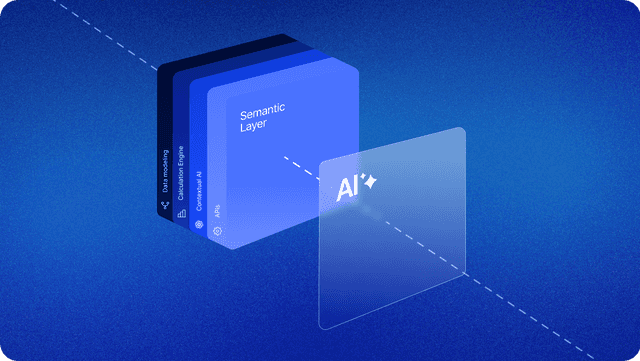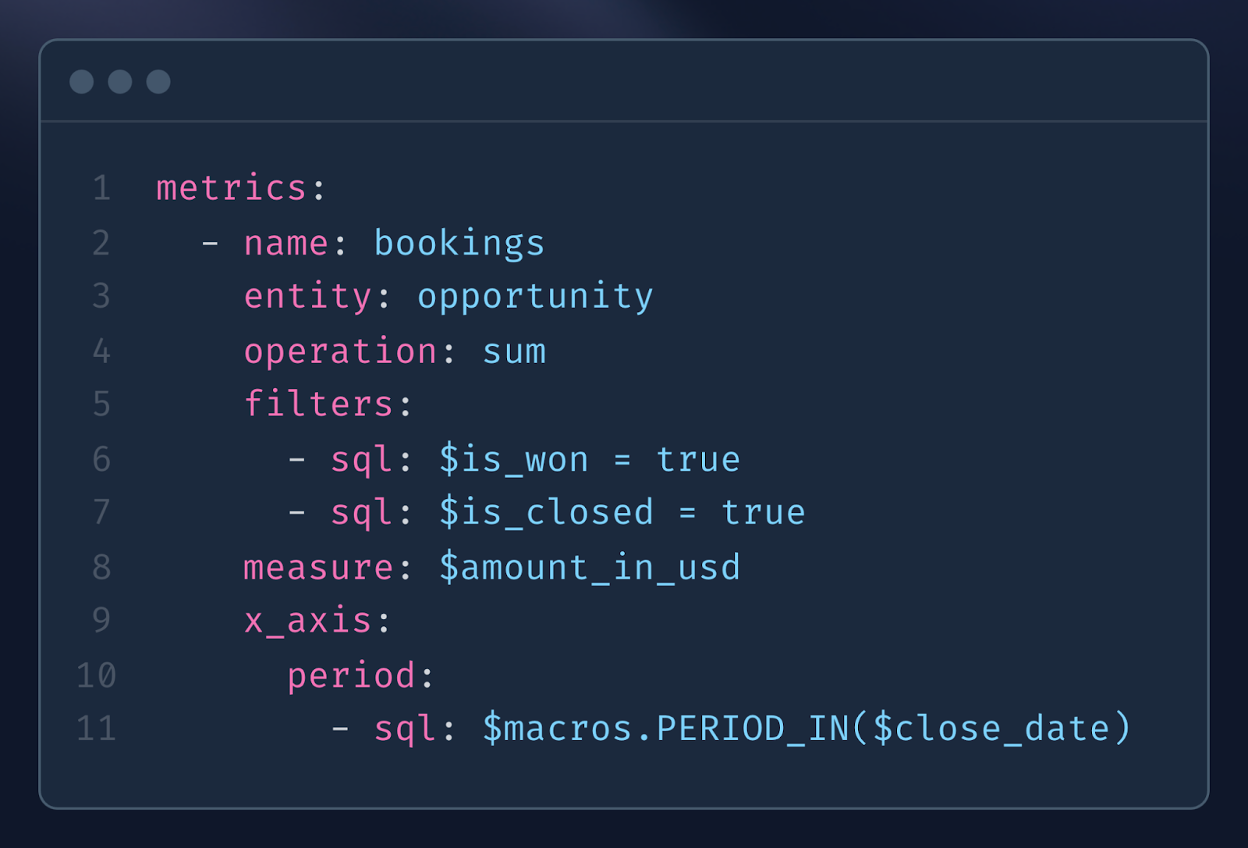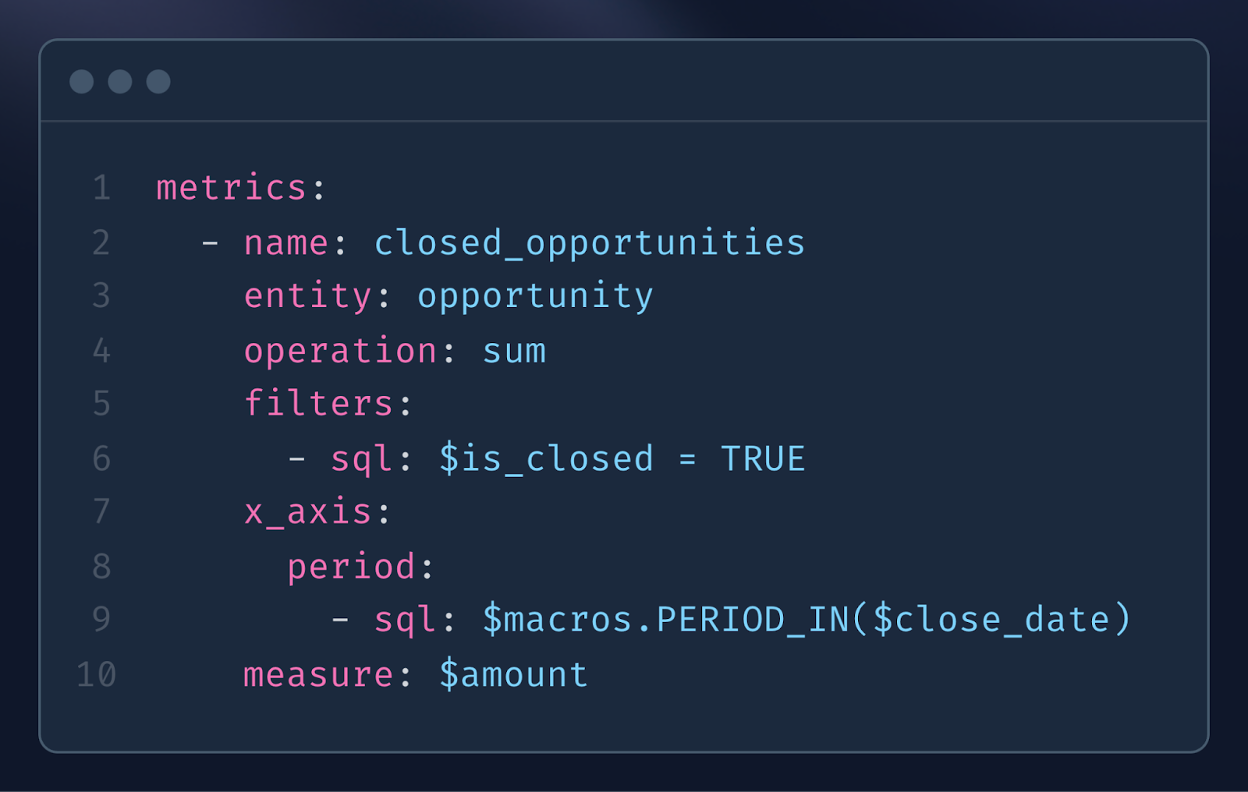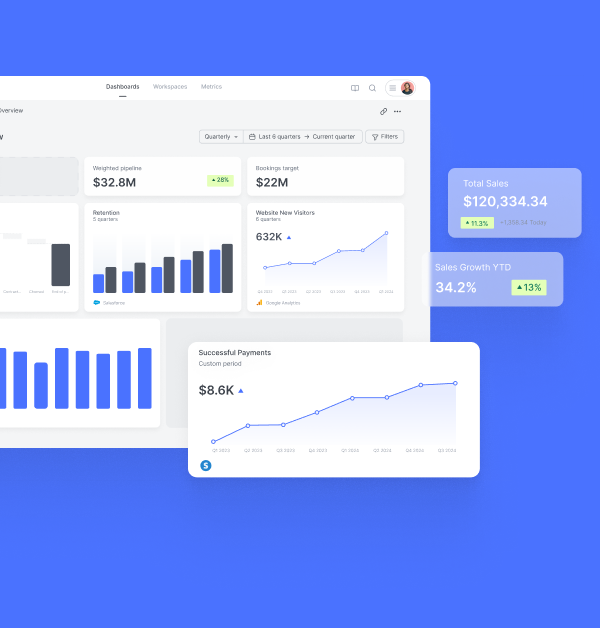Semantic Layers 101: Bridging Data and Business Intelligence

Co-Founder & CTO
If you’ve been around the data world for a while, you’ve probably heard the term “semantic layer” being thrown around. It’s not a new concept, but it’s been gaining a lot of traction lately, and for good reason. Semantic layer technologies are becoming increasingly important in modern data analytics.
You see, with the rise of Generative AI and the ever-growing need for data democratization and self-service analytics, semantic layers have become more relevant than ever. These layers act as the glue between your data and your metrics, making it easier for everyone, technical or not, to access and understand the data they need.
So, while semantic layers have been around for a while, they’re now taking center stage as organizations strive to empower their teams with data-driven insights and keep up with the rapid pace of technological advancements like GenAI.
In this post, we’ll dive deeper into what semantic layers are, why they matter, and how they can help you unlock the true potential of your data.

What is a semantic layer?
Every data project typically involves three main components: the raw data sources, the metrics or analytical measures derived from the data, and the visualization or presentation layer.
Without a semantic layer, metrics are typically calculated directly in the data transformation layer (e.g., ETL processes) or the visualization layer.
This approach can lead to several issues:
- The metric logic is hidden within the transformation or visualization code, making it difficult to understand and maintain.
- The metric calculations are expressed in technical terms, making them challenging for non-technical users to comprehend.
- Metric definitions are hardcoded, leading to long turnaround times for changes or updates.
- There is a lack of governance around metrics, with no standardized process for approving, creating, or managing them.
- It becomes challenging to maintain accountability for metric definitions and ensure consistency across the organization.
- The lack of a centralized repository for metric definitions can lead to duplication, ambiguity, and inconsistencies in their usage. By introducing a semantic layer, these issues can be addressed, as semantic layers provide a centralized and business-friendly layer for defining and managing metrics.
Components of a Semantic Layer
It is called a “semantic layer” because it provides a semantic representation of the data, capturing the meaning and context of the metrics in a way that aligns with the business terminology and understanding.
This semantic representation abstracts away the technical complexities of the underlying data, making it easier for users to work with metrics and derive insights without needing to understand the intricacies of the data storage and transformation processes.
The semantic layer model typically consists of two main components: Semantic Objects: These are the business-friendly representations of the data entities, attributes, and relationships.
- Semantic objects abstract away the technical details of the underlying data sources and present the data in a way that aligns with the business terminology and understanding.
- Metric Layer: The metric layer is responsible for defining the calculations, aggregations, and transformations required to derive meaningful metrics from the data. It encapsulates the logic for computing key performance indicators (KPIs), business metrics, and other analytical measures.
By combining semantic objects and the metric layer, a semantic layer provides a comprehensive abstraction layer that bridges the gap between raw data and the analytical requirements of the business. It translates the technical data structures into a semantic representation that aligns with the business context, while also defining the calculations and transformations necessary to derive valuable insights from the data.
And that's not all – semantic layers often come with additional features too. For instance, they usually include data access controls to keep your data secure and ensure users only see what they're supposed to. Many also implement smart caching mechanisms to speed things up, so you're not waiting around for your insights. And if you're into integrations, you'll be glad to know that most semantic layers offer API access, allowing you to plug them into your other tools and systems seamlessly.
Benefits of a Semantic Layer
By introducing a semantic layer, organizations can bridge the gap between data teams and business teams, fostering collaboration, trust, and data-driven decision-making across the entire organization.
For Data Teams
- Metric Lineage: Provides transparency into metric logic, calculations, and field definitions, eliminating confusion and maintaining trust in data accuracy across the organization.
- Security & Governance: Enables streamlined and thoroughly enforced governance policies related to access control, data definitions, performance, and resource consumption.
- Reusability of Metrics: Allows metrics to be reused across the organization, reducing redundancy, saving time, and increasing operational efficiency.
- Performance and Optimization: Offers techniques like push-down, intermediate servers and caching to optimize performance, resulting in efficient data operations, faster query responses, and a smoother user experience.
- Reducing Computing Costs: Optimizes resource usage, lowering overhead costs associated with data processing and freeing up budget for other initiatives.
For Business Teams
- Single Source of Truth: Ensures cross-functional consistency and accuracy in the findings used for decision-making, promoting alignment and trust across teams.
- Non-technical Friendly: Makes complex data accessible through user-friendly interfaces, democratizing data access and empowering users to engage with data independently, regardless of their technical expertise.
- Data and Metric Governance: Keeps data secure and compliant with governance policies, reassuring users that the data they are working with is unaltered, protected, and trustworthy, reinforcing customer trust.
- Reducing Time-to-Insights: Accelerates data modeling, allowing users faster access to new metrics and insights, enhancing agility and enabling the business to respond rapidly to changing conditions.
- Enhanced Decision-Making: Facilitates the embedding of custom analytics and AI-driven predictions into workflows, providing contextualized insights and supporting informed decision-making processes.
Disadvantages of a Semantic Layer
Semantic Layers, like any other tool, introduce an additional layer of complexity to existing data stacks. Some potential disadvantages and challenges include:
- Learning Curve: Adopting a new tool requires an investment in training and upskilling teams, which can be time-consuming
- Adoption Challenges: Gaining widespread adoption among business analysts and other stakeholders can be difficult, especially if they are accustomed to existing tools and workflows.
- Rollout complexities - if not managed properly, such as through an incremental rollout approach or by focusing on specific use cases or departments, can lead to failed adoption or suboptimal utilization of the semantic layer.
- Modeling Limitations: As the technology evolves, not all use cases or modeling requirements may be supported initially, potentially limiting the scope of implementation.
Applications and Use Cases for a Semantic Layer
A semantic data layer can be leveraged in several ways, either as a standalone platform or embedded within other tools and applications. The three most common semantic layer applications are:
Universal semantic layer
As data proliferates across organizations, managing metrics consistently becomes a major challenge. Issues like conflicting metric definitions, opaque logic, governance gaps, tool silos, and performance bottlenecks arise, hindering effective data utilization.
A universal semantic layer offers a centralized solution by providing a business-friendly layer for managing metrics across the enterprise. It enables consistent definitions, transparent logic, robust governance, integrated tools, and optimized performance. This approach promotes data democratization and cross-functional collaboration, empowering organizations to harness data strategically.
Semantic layer in Business Intelligence and data analytics
There is a new generation of business intelligence (BI) and data analytics solutions being built around a semantic layer. Rather than directly querying data sources, these tools leverage a semantic layer that provides an abstraction layer on top of the raw data.
Building analytics on top of a semantic layer enables new capabilities that are difficult to achieve with traditional BI tools:
- Dynamic Queries: Business users can ask ad-hoc questions and get answers to complex queries without requiring IT support or knowing the underlying data structures. The semantic layer translates the business language into the appropriate data queries.
- Data Visualization and Semantic Modeling: Users can instantly visualize data trends and patterns through semantic modeling within the semantic layer. This allows for faster data exploration and insights.
- Self-Service Analytics: Non-technical business users can create their own reports, dashboards, and analyses in a self-serve manner by working with the semantic business views rather than raw data tables. This reduces reliance on data teams.
- Contextual Analysis: The semantic layer provides business context around the data, allowing AI/ML models to generate insights based on that context rather than just raw data values.
- Embedded Analytics: Analytics can be seamlessly embedded into operational workflows and applications by leveraging the semantic layer’s abstraction.
By providing a business-friendly semantic layer on top of data sources, this new generation of BI and analytics tools empowers business users with self-serve data exploration and insights without significant technical skills. The semantic models make data more accessible and actionable across the organization.
Embedded Analytics
The semantic layer acts as an abstraction layer, sitting between the application’s data sources and the analytics functionality. It exposes an API that allows developers to access predefined metrics and business logic from the semantic layer, rather than having to implement complex calculations and data transformations within the application code itself.
By using a semantic layer for embedded analytics, applications can:
- Simplify Development: Developers can focus on building the core application functionality, while offloading the complexity of data modeling and metric calculations to the semantic layer.
- Ensure Consistency: Metrics and business logic defined in the semantic layer can be consistently applied across multiple applications, ensuring alignment and avoiding discrepancies.
- Enable Self-Service Analytics: End-users can leverage the semantic layer’s user-friendly interface to explore data, create custom metrics, and generate insights without relying on developers.
- Future-Proof Analytics: As business requirements evolve, changes to metrics and calculations can be made within the semantic layer, without requiring modifications to the application code.
- Leverage Existing Investments: Organizations can reuse their existing investments in data modeling, governance, and security policies by integrating applications with their established semantic layer.
The use of embedded semantic layers streamlines the development process, promotes consistency, and empowers end-users with self-service capabilities, while ensuring that applications can leverage trusted, governed, and up-to-date analytics.
Semantic layer to support GenAI
Leveraging semantic layers supports the effective utilization of generative AI (GenAI) technologies by:
- Grounded Metrics: Ensuring AI-generated insights are based on accurate and consistent metric definitions from the semantic layer, mitigating hallucinations.
- Contextual Analysis: Encapsulating business context within the semantic layer, allowing AI models to generate contextually relevant predictions and recommendations.
- Enhanced Decision-Making: Facilitating the embedding of AI-driven analytics into existing workflows for quicker, informed decisions without switching between tools.
- Augmented Data Exploration: Enabling natural language interfaces for data exploration by leveraging the semantic layer’s abstraction.
- Scalable and Governed AI: Promoting trust and responsible AI adoption by operating within the governance and security frameworks of the semantic layer.
As GenAI continues to evolve, semantic layers bridge the gap between raw data and AI models, unlocking the full potential of data-driven insights while maintaining accuracy, relevance, and governance.
Examples of creating metrics using a semantic layer
Let’s see a semantic layer in practice with a simple metric calculation - the “Win Rate” metric, which is calculated by those two other metrics:
Win Rate = Bookings / Closed Opportunities
To define this metric using a semantic layer, we can either use a user-friendly UI editor or a YAML file (more developer-friendly). Here’s how we might define the two underlying metrics needed for the Win Rate calculation:


With these two metrics defined, we can then create the “Win Rate” metric as a division of the two:

By defining metrics in this way using the semantic layer, they become contextualized and gain additional dynamic capabilities without adding a single line of code:
- Time Periods: The win rate can be analyzed over different time periods like months or quarters to identify trends.
- Drill Down: The win rate can be broken down by dimensions like region, product line, etc. to pinpoint areas for improvement.
- Combined Metrics: The win rate metric can be used in combination with other metrics, like revenue, to calculate metrics like revenue per win.
- Code-Free: All this analysis can be done through the semantic layer interface without writing any code.
Behind the scenes, the semantic layer translates these definitions into the appropriate SQL queries and executes them against the data sources. This allows business users to define and work with metrics using intuitive business language, while still leveraging the full power of the underlying data.
Conclusion
We've explored semantic layers, their benefits, and applications. They're transforming how we handle data, making it accessible and meaningful across organizations. As data-driven decision-making and AI continue to evolve, semantic layers will play a crucial role in bridging raw data with actionable insights. Stay tuned for more data adventures!
Book a Demo
Get to know Sightfull's Semantic Layer
Semantic Layer: The Key to Accessible and Scalable Data
Discover how semantic layers bridge the gap between your data and actionable insights, empowering teams to work smarter with user-friendly, business-focused metrics.
